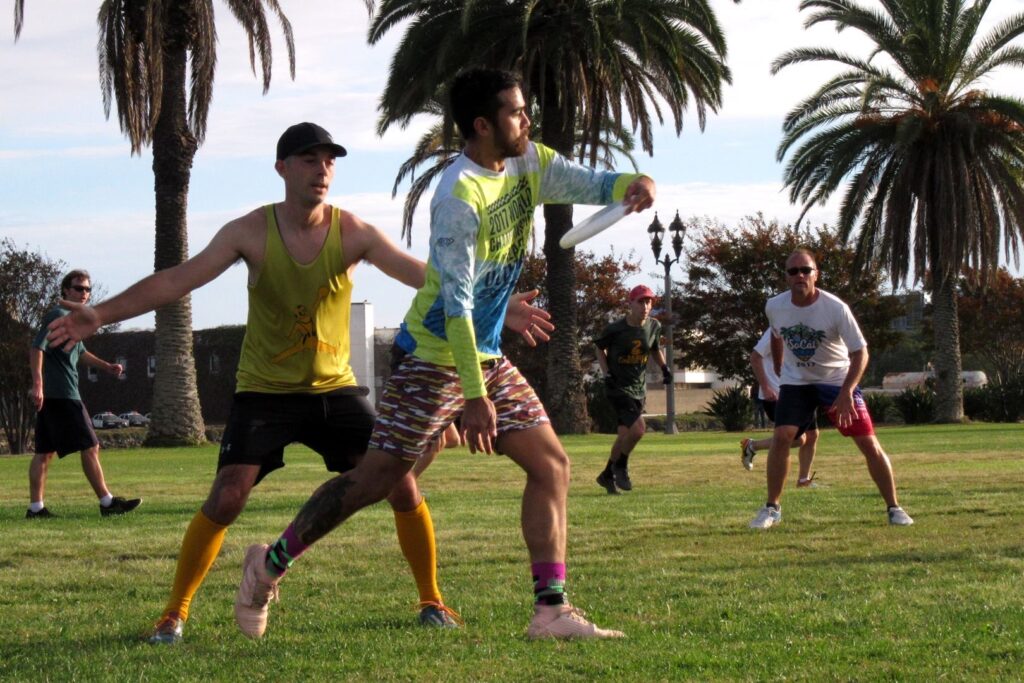Ultimate frisbee is a fast-paced, high-energy sport that combines elements of soccer, basketball, and American football—but at its heart, success comes down to mastering the flight of a plastic disc and the athleticism of every player. Whether you’re a newcomer looking to understand the fundamentals or a seasoned veteran aiming to refine your game, structured drills and targeted conditioning are critical. This guide dives deep into the drills, strength and conditioning routines, and injury-prevention strategies that will help you elevate your ultimate frisbee skills to the next level.
1. The Foundation: Disc Skills Drills
1.1 The Wrist Flick
- Objective: Develop consistent spin and release angle.
- How to Perform:
- Stand stationary, hold the disc near your hip.
- Rotate your wrist sharply, allowing the disc to roll off your fingertips.
- Focus on imparting clean, tight spin.
- Reps and Sets: 5 sets of 20 flicks each hand.
- Common Pitfalls: Over-arm motion (instead of wrist), inconsistent grip pressure.
1.2 The Push Pass
- Objective: Learn quick, flat releases ideal for dump and swing passes.
- How to Perform:
- Hold the disc with forefingers on the rim, thumb underneath.
- Push the disc forward, extending your arm fully.
- Snap your wrist at the end of the movement for added spin.
- Reps and Sets: 4 sets of 15 pushes alternating hands.
- Focus Points: Keep passes low and flat, envision a straight trajectory.
1.3 Partner Throw-and-Catch Relay
- Objective: Improve accuracy under movement and timing with a teammate.
- How to Perform:
- Pair up, stand 20 meters apart.
- On “go,” player A sprints forward 5 meters, catches a pass from B, and immediately throws back.
- Rotate roles after each pass.
- Duration: 3 minutes continuous, rest 1 minute, repeat 3 times.
- Key Coaching Tip: Emphasize communication—call your throws.
2. Cutting and Movement Drills
2.1 The V-Cut Drill
- Objective: Perfect the fundamental sharp cut to create separation.
- How to Perform:
- Start 10 meters behind the thrower.
- Sprint forward 5 meters, plant your outside foot, and cut sharply back toward the thrower.
- Receive the pass on the break side.
- Reps and Sets: 5 cuts each direction per set, 3 sets total.
- Focus: Low center of gravity, explosive first step.
2.2 The Continuous Cutting Game
- Objective: Enhance endurance in game-like cutting patterns.
- How to Perform:
- Form two lines of 4 players, each line opposite a thrower.
- On the whistle, the first cutter from each line sprints, cuts, catches, and throws back, then returns to the back of the line.
- Maintain constant motion for 3 minutes.
- Benefit: Simulates the continuous hustle required in a point.
2.3 Zone Break Simulation
- Objective: Practice quick breaks against imaginary or live defense.
- How to Perform:
- Set up three cones in a triangle—thrower stands at one corner.
- Cutter starts at a different corner, defender (or cone) marks the inside lane.
- Cutter works to find the open angle—unders, overs, swings—until they catch the disc.
- Duration: 2 minutes per cutter, rotate through the line.
3. Conditioning for Ultimate
3.1 Sprint Interval Training (SIT)
- Why It Matters: Ultimate requires repeated bursts of speed and rapid recovery.
- Workout Structure:
- Warm-up: 10 minutes dynamic stretching (leg swings, lunges, high knees).
- Intervals: 8 × 100-meter sprints at maximal effort, with 60 seconds rest between.
- Cool-down: 5 minutes light jog and static stretches.
3.2 Agility Ladder Routines
- Purpose: Improve foot speed, balance, and neuromuscular coordination.
- Sample Routine:
- Single-foot hops through each rung.
- Two-feet in, two-feet out zigzag.
- Lateral shuffles with one foot in each box.
- Duration: 15 minutes total, incorporating rest as needed.
3.3 Strength Training for Power and Injury Prevention
- Key Movements:
- Squats and Lunges: Build lower-body power for explosive cuts.
- Deadlifts: Strengthen hamstrings and glutes for sprint drives.
- Rotational Medicine Ball Throws: Develop torso strength for powerful backhand throws.
- Weekly Plan: Full-body strength sessions 2×/week, with accessory work (core, shoulders) on field days.
4. Mobility and Injury Prevention
4.1 Dynamic Warm-up Routine
- Components: Arm circles, hip openers, walking lunges with twist, inchworms.
- Objective: Elevate heart rate, lubricate joints, activate muscle groups.
4.2 Foam Rolling and Myofascial Release
- Areas to Focus: IT band, quads, calves, lats.
- Technique: 1–2 minutes per muscle group, pausing on tight spots.
4.3 Cool-down and Stretching
- Static Stretches: Hamstring stretch, figure-4 hip stretch, doorway chest opener.
- Duration: Hold each stretch for 30 seconds, repeat twice.
5. Putting It All Together: Designing a Weekly Practice
| Day | Focus | Details |
|---|---|---|
| Monday | Disc Skills + Light Conditioning | Wrist flicks, push passes, 30-minute easy jog |
| Tuesday | Cutting Drills + Strength | V-cuts, continuous cutting, lower-body strength session |
| Wednesday | Rest/Recovery | Foam rolling, yoga-style mobility |
| Thursday | Scrimmage + Sprints | Controlled scrimmage, SIT workout |
| Friday | Partner Drills + Agility | Throw-catch relays, agility ladder |
| Saturday | Full Game Play | Tournament play or pick-up games |
| Sunday | Active Recovery | Light hike, swimming, or yoga |
Conclusion
Mastery in ultimate frisbee is not an overnight achievement—it’s the cumulative result of focused drills, targeted conditioning, and thoughtful recovery. By integrating these exercises consistently, you’ll notice sharper throws, quicker cuts, and a reduced risk of injury. Remember: Track your progress, keep your body mobile, and always communicate with teammates on the field. Now grab your disc, find your practice partners, and let’s take your ultimate frisbee game to new heights!


